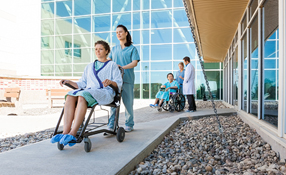Kyle Cusson

Kyle Cusson
Business Development Manager, Healthcare, Pelco, IncKyle Cusson is a Business Development Manager, Healthcare, Pelco.
News mentions
Part 3 of our Security in Healthcare series Megapixel and higher-definition cameras are meeting the security and surveillance needs of a variety of hospital and healthcare facilit...
Part 2 of our Security in Healthcare series Users need to be able to upgrade in a way that fits with both their securityneeds and their budgetary limitations The futu...





































